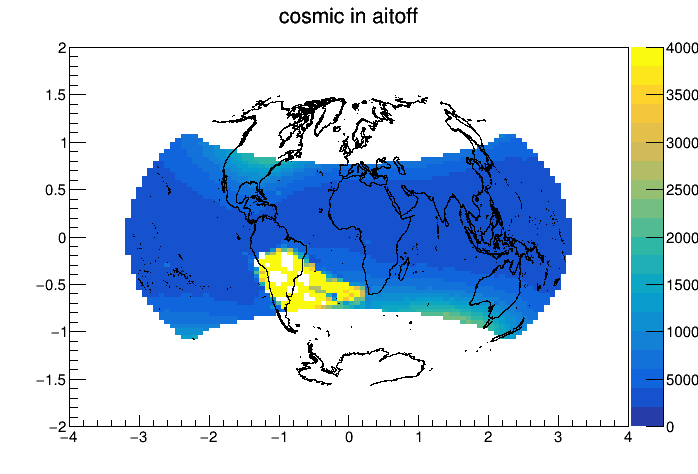Polar
A compact detector for Gamma Ray Bursts photon polarization measurements
Polar was launched in space September 15 2016 at 14:04 UTC
Polar stopped scientific operation on 1t April 2017
Polar data is published in CDCI We will incrementally put more and more science products there for use by the golbal science community.


raw photon rates and cosmic rate of POLAR. We did pass a couple of time through the SAA without switching off (and survived)"

Control room, POLAR can be seen flying in space on the screen to the right"

Launch of TG2

POLAR attached to Tiangong2 just before closing the fairing

POLAR attached mounting to Tiangong2

POLAR ready to pass thermal vaccum balance in Shanghai.
Short Introduction
56 years after their discovery (1960 Vela satellites), gamma ray bursts (GRBs) are still full of mysteries. The production mechanism of these very intense explosions in the universe is still unknown. To validate or exclude existing models about their creation, a precise measurement of the polarization of the GRB is an important input. But, measuring convincingly the polarization of GRBs is a difficult experimental challenge, because GRBs are rare events that happen at random locations and times in the universe. Thus, existing general purpose detectors cannot properly measure the polarization and existing results are often unprecise and controversial.
The POLAR detector design as published in Produit et al. (NIM A 550 (2005) 616-625) is a dedicated polarimeter:
- The Compton Scattering Effect is used to measure the polarization of incoming photons.
- POLAR makes no attempt to do a precise localization of the GRB in the sky. This greatly simplifies the design of the detector. Currently, special purpose satellites like SWIFT can provide this information immediately. Many future satellites will have similar capabilities. To complement this, POLAR can roughly localize strong GRBs independently and with sufficient precision for a stand-alone measurement (preprint)
- Further publications of the POLAR collaboration.
The POLAR Detector
The POLAR Detector Design is based on the following requirements:
- A Compton Polarimeter in
- a simple and compact instrument that:
- relies on a given burst position and spectrum
- or provides a crude estimate in case of stand-alone observation
- Dedicated for GRB observations only, thus needs:
- Large effective area,
- large modulation factor
- and a large field-of-view.
- The energy range for the incoming photons needs to cover 50 keV to 500 keV, a region, where the Compton Scattering Effect is dominant.
These requirements lead to the basic design of POLAR:
- 1600 scintillating bars form a uniform array of 40x40
- Light, fast and low Z plastic scintillators are used, optimised for compton scattering
- The scintillator size of 6x6x200 mm matches the chosen readout photomultiplier MAPM8500 from Hamamatsu
- passive shielding will be used to protect POLAR against low energetic cosmic rays
- the main readout electronics will be housed under the detection target
- the detection target achieves:
- an effective area of 400 cm2,
- a modulation factor of about 35 percent
- and a field-of-view covering about one third of the sky
The POLAR Collaboration
The construction of the POLAR Detector is performed in Europe and China by the following institutes:
- INTEGRAL Science Data Centre (ISDC), Geneva, Switzerland
- Département de Physique Nucléaire et Corpusculaire (DPNC), Geneva, Switzerland
- Paul Scherrer Institut (PSI), Villigen, Switzerland
- Institute of High Energy Physics (IHEP), Beijing, China
- Narodowe Centrum Badań Jądrowych (NCBJ), Świerk, Poland




